
Amenemhat III, also known as Amenemhet III, was a pharaoh of ancient Egypt and the sixth king of the Twelfth Dynasty of the Middle Kingdom. He was elevated to throne as co-regent by his father Senusret III, with whom he shared the throne as the active king for twenty years. During his reign, Egypt attained its cultural and economic zenith of the Middle Kingdom.

Userkare Khendjer was a minor king of the early Thirteenth Dynasty of Egypt during the Middle Kingdom. Khendjer possibly reigned for four to five years, archaeological attestations show that he was on the throne for at least three or four years three months and five days. Khendjer had a small pyramid built for himself in Saqqara and it is therefore likely that his capital was in Memphis.

Senusret I also anglicized as Sesostris I and Senwosret I, was the second pharaoh of the Twelfth Dynasty of Egypt. He ruled from 1971 BC to 1926 BC, and was one of the most powerful kings of this Dynasty. He was the son of Amenemhat I. Senusret I was known by his prenomen, Kheperkare, which means "the Ka of Re is created." He expanded the territory of Egypt allowing him to rule over an age of prosperity.
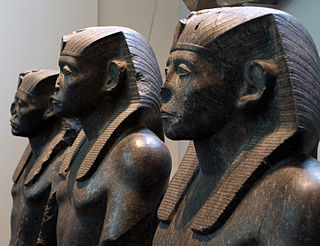
Khakaure Senusret III was a pharaoh of Egypt. He ruled from 1878 BC to 1839 BC during a time of great power and prosperity, and was the fifth king of the Twelfth Dynasty of the Middle Kingdom. He was a great pharaoh of the Twelfth Dynasty and is considered to rule at the height of the Middle Kingdom. Consequently, he is regarded as one of the sources for the legend about Sesostris. His military campaigns gave rise to an era of peace and economic prosperity that reduced the power of regional rulers and led to a revival in craftwork, trade, and urban development. Senusret III was among the few Egyptian kings who were deified and honored with a cult during their own lifetime.

Khutawyre Wegaf was a pharaoh of the early Thirteenth Dynasty of Egypt in the late Middle Kingdom/Second Intermediate Period. He is known from several sources, including a stele and statues. In the Turin King List he is the first ruler of this dynasty with a reign of 2 regnal years.

Khaneferre Sobekhotep IV was one of the more powerful Egyptian kings of the 13th Dynasty, who reigned at least eight years. His brothers, Neferhotep I and Sihathor, were his predecessors on the throne, the latter having only ruled as coregent for a few months.

Sekhemre Wahkhau Rahotep was an Egyptian pharaoh who reigned during the Second Intermediate Period, when Egypt was ruled by multiple kings. The Egyptologists Kim Ryholt and Darrell Baker believe that Rahotep was the first king of the 17th Dynasty.

Sobekhotep III was an Egyptian king of the mid Thirteenth Dynasty of Egypt who reigned three to four years.
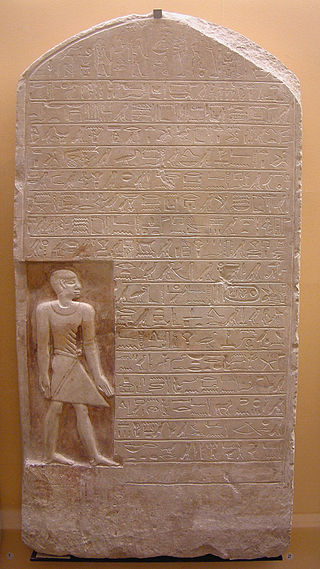
Ankhu was an Egyptian vizier during the early 13th Dynasty in the late Middle Kingdom. He is believed to have resided in Thebes in Upper Egypt.
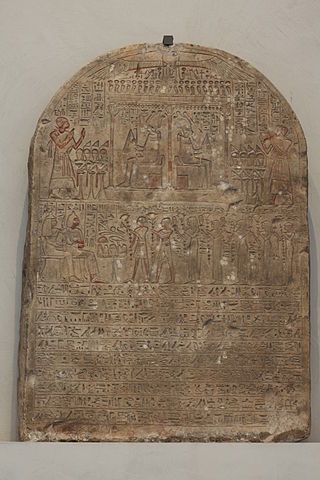
Ptahmose was a High Priest of Amun and Vizier of southern Egypt-(Upper Egypt), under Amenhotep III. Certain historians place him at the end of the reign in 1378 BC. Others place him in the first part of the reign.

Iymeru Neferkare was the ancient Egyptian vizier under king Sobekhotep IV in the 13th Dynasty, in the Second Intermediate Period.

Aya was an ancient Egyptian king's wife of the early Thirteenth Dynasty.

Khay (Kh-'-y) was an Ancient Egyptian noble who served as Vizier in the latter part of the reign of Ramesses II, during the 19th Dynasty.
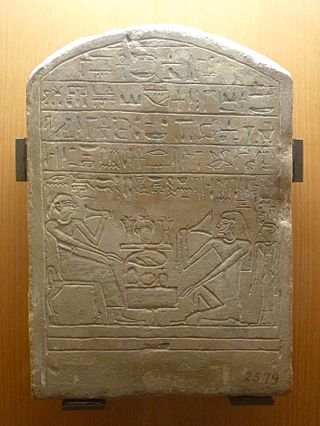
Senewosret-Ankh {s-n-wsrt-ꜥnḫ/snfrw} was an ancient Egyptian vizier of the Middle Kingdom, dating to the end of the Twelfth or to the beginning of the Thirteenth Dynasty.

Zamonth or Samont was an ancient Egyptian vizier who is thought to have been in office during the reign of Amenemhat III, at the end of the Twelfth Dynasty.
This page list topics related to ancient Egypt.
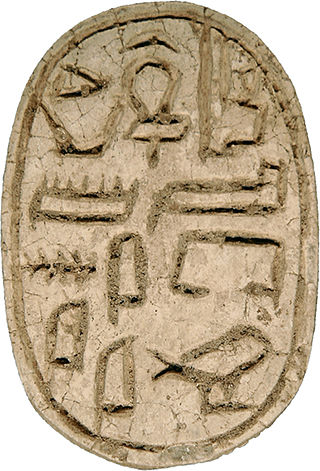
Ameny was an ancient Egyptian official of the 13th Dynasty with the title high steward. In this function he was the main administrator of the royal estates.

Menkhaure Snaaib was an Egyptian pharaoh during the Second Intermediate Period between the Middle Kingdom and New Kingdom at the end of the Middle Bronze Age.

Wenennefer was an ancient Egyptian High Priest of Osiris at Abydos, during the reign of pharaoh Ramesses II of the 19th Dynasty.

Aabeni was an ancient Egyptian official with the title high steward. He was one of the most important officials at the royal court in the early Thirteenth Dynasty.




















